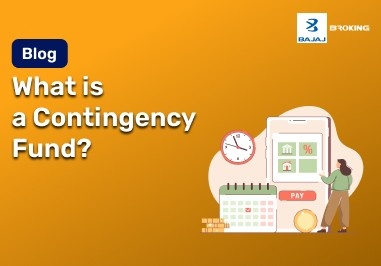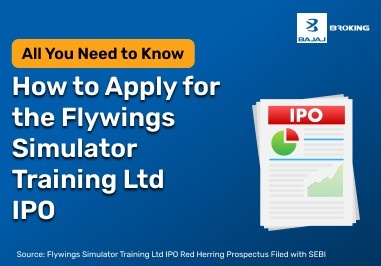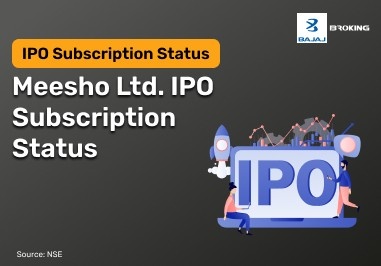What is Option Volatility?
Option volatility refers to the rate and magnitude of price changes in the underlying asset. It is a statistical measure that quantifies the dispersion of returns for a given security or market index. In the context of options, volatility is a key input in option pricing models because it impacts the probability of an option reaching or exceeding its strike price.
Historical Volatility
Historical volatility is calculated based on past price movements of the underlying asset. It uses historical data to determine how much the asset's price has fluctuated over a specific period. This measure provides an indication of past price instability, but it does not directly forecast future price movements. It is typically expressed as an annualised standard deviation of daily price returns.
Implied Volatility
Implied volatility is derived from the market price of an option and represents the market's expectation of future volatility for the underlying asset. It is not directly observable but is instead backed out of an option pricing model, such as the Black-Scholes model, using the current market price of the option, the underlying asset's price, the strike price, time to expiration, and risk-free interest rates. Higher implied volatility generally suggests that market participants anticipate larger price swings in the future.
Impact on Option Prices
Volatility directly influences option premiums. When volatility increases, the probability of the underlying asset's price moving significantly in any direction rises. This increased probability enhances the chance of an option becoming in-the-money, thereby increasing its value. Consequently, both call and put options generally become more expensive with higher volatility. Conversely, a decrease in volatility typically leads to lower option premiums, as the likelihood of substantial price movements diminishes.
Also Read: Futures Pricing
Importance of option pricing strategies
Risk Management
Option pricing strategies are integral to risk management in options trading. By understanding how various factors influence option prices, traders can assess the potential risks associated with their positions. Strategies can be designed to define maximum potential losses and manage exposure to market movements, thereby contributing to a structured approach to risk.
Valuation and Fair Value Assessment
Pricing strategies provide a framework for valuing options and determining their theoretical fair value. Comparing this theoretical value to the current market price allows traders to identify if an option is potentially undervalued or overvalued, which can inform trading decisions. This assessment is a systematic way to evaluate opportunities.
Strategy Selection and Optimisation
Different option pricing strategies align with different market outlooks and risk appetites. A thorough understanding of these strategies allows traders to select the most appropriate one for their specific market view. It also enables them to optimise existing strategies by adjusting strike prices, expiration dates, or the number of contracts to better suit changing market conditions.
Profit Potential Identification
By analysing the components of option pricing, traders can identify situations where certain options may present profit potential. For example, understanding the impact of implied volatility can lead to strategies designed to profit from anticipated increases or decreases in future volatility.
Informed Decision Making
The application of option pricing strategies contributes to more informed trading decisions. Rather than relying on speculation, traders can base their actions on quantitative analysis of option Greeks, volatility levels, and other pricing factors, providing a basis for their trading activity.
Factors influencing option prices
Underlying Asset Price
The current price of the underlying asset is a direct and significant factor in an option's price. For call options, as the underlying asset's price increases, the call option's value generally rises, assuming all other factors remain constant. Conversely, for put options, as the underlying asset's price decreases, the put option's value typically increases. This relationship is a fundamental aspect of option valuation.
Strike Price
The strike price is the predetermined price at which the underlying asset can be bought or sold. The difference between the underlying asset's current price and the option's strike price determines the option's intrinsic value. For call options, a lower strike price generally leads to a higher option premium, while for put options, a higher strike price generally results in a higher premium.
Time to Expiration
The amount of time remaining until an option expires impacts its extrinsic value (time value). Generally, options with more time until expiration have higher time value because there is a greater probability for the underlying asset's price to move favorably. As an option approaches its expiration date, its time value erodes, a phenomenon known as time decay.
Volatility
Volatility, as discussed, refers to the expected fluctuation in the underlying asset's price. Higher implied volatility generally leads to higher option premiums for both calls and puts, as there is an increased chance of the option expiring in the money. Lower implied volatility typically results in lower option premiums.
Interest Rates
Interest rates have a subtle but measurable effect on option prices. For call options, an increase in risk-free interest rates generally leads to a slight increase in their value. This is because higher interest rates reduce the present value of the strike price, making the option more attractive. For put options, an increase in interest rates generally leads to a slight decrease in their value.
Dividends
Anticipated dividend payments by the underlying asset can affect option prices. For call options, a dividend payment typically reduces the underlying asset's price, which can negatively impact the value of a call option. For put options, a dividend payment can slightly increase their value due to the expected price drop in the underlying asset.
Option Volatility and Pricing Strategies
Leveraging Implied Volatility (IV), traders can employ diverse strategies. Here are a selection of commonly utilised techniques:
Calculating Option Prices: The Role of Volatility
Option prices are contingent upon seven factors, with six of these variables being readily available to traders. The seventh factor, volatility, remains as the variable with the potential to significantly influence options pricing. To devise effective option strategies, one must grasp the impact of this elusive element:
1. Type of Options – This choice is made by the trader.
2. Underlying Asset Price – This value is a known quantity.
3. Strike Price – A predetermined decision.
4. Expiration Date – An established date.
5. Risk-Free Interest Rate – A known factor.
6. Dividend on Underlying Asset – Also a known component.
7. Market Volatility (Implied Volatility) – This variable remains the unknown element in the equation.
Hence, the intricate interplay between option volatility and pricing strategies is a frequently discussed and central theme in the realm of options trading. Understanding how implied volatility can sway options pricing is paramount in shaping effective trading strategies.
Also Read: Margin Trading vs Short Selling
Common Methods For Assessing Volatility Encompass
Traders keen on developing effective strategies must gauge volatility and understand its determinants. This comprehension allows them to identify opportune moments for profitable option transactions. Common methods for assessing volatility encompass:
Additional Read: ITM call option
Option Volatility and Pricing Strategies
Long Call
A long call strategy involves purchasing a call option. This strategy is typically employed when a trader anticipates a significant increase in the underlying asset's price. The maximum loss is limited to the premium paid for the option, while the potential profit is theoretically unlimited as the underlying asset's price can rise indefinitely.
Short Call
A short call strategy involves selling a call option. This strategy is generally used when a trader expects the underlying asset's price to remain stable or decline. The maximum profit is limited to the premium received from selling the option, while the potential loss is theoretically unlimited if the underlying asset's price rises significantly.
Long Put
A long put strategy involves purchasing a put option. This strategy is typically employed when a trader anticipates a significant decrease in the underlying asset's price. The maximum loss is limited to the premium paid for the option, while the potential profit increases as the underlying asset's price falls towards zero.
Short Put
A short put strategy involves selling a put option. This strategy is generally used when a trader expects the underlying asset's price to remain stable or increase. The maximum profit is limited to the premium received from selling the option, while the potential loss is substantial if the underlying asset's price declines significantly, potentially down to zero.
Straddle
A straddle strategy involves simultaneously buying or selling both a call and a put option with the same strike price and expiration date. A long straddle is implemented when a significant price movement is expected, but the direction is uncertain. A short straddle is used when the underlying asset is expected to remain within a narrow price range.
Strangle
A strangle strategy involves simultaneously buying or selling both an out-of-the-money call and an out-of-the-money put option with the same expiration date but different strike prices. A long strangle is used when a large price movement is anticipated in either direction. A short strangle is employed when the underlying asset is expected to trade within a relatively narrow range.
Iron Condor
An iron condor is a neutral options strategy designed to profit from an underlying asset remaining within a specific price range. It involves selling an out-of-the-money call spread and an out-of-the-money put spread simultaneously. This strategy has limited profit and limited risk, both defined at the outset.
Vertical Spreads (Call/Put)
Vertical spreads involve simultaneously buying and selling two options of the same type (calls or puts) with the same expiration date but different strike prices. These can be bull call spreads, bear call spreads, bull put spreads, or bear put spreads, each designed for specific directional biases and offering defined risk and reward.
In Summary
Options trading presents an enticing avenue for substantial profits, yet it demands a comprehensive grasp of option volatility, pricing, and the application of advanced trading strategies. Option volatility is a pivotal facet of this domain, necessitating an understanding of the influencing factors and the significance of its measurement.
Pricing strategies, exemplified by the Black-Scholes and binomial models, hold a vital role in determining option prices. These models afford traders diverse approaches to navigating the market’s intricacies. Leveraging advanced strategies like straddles, strangles, and spreads offers traders enhanced flexibility and profit potential. However, it is crucial to meticulously assess one’s risk tolerance and market outlook.














